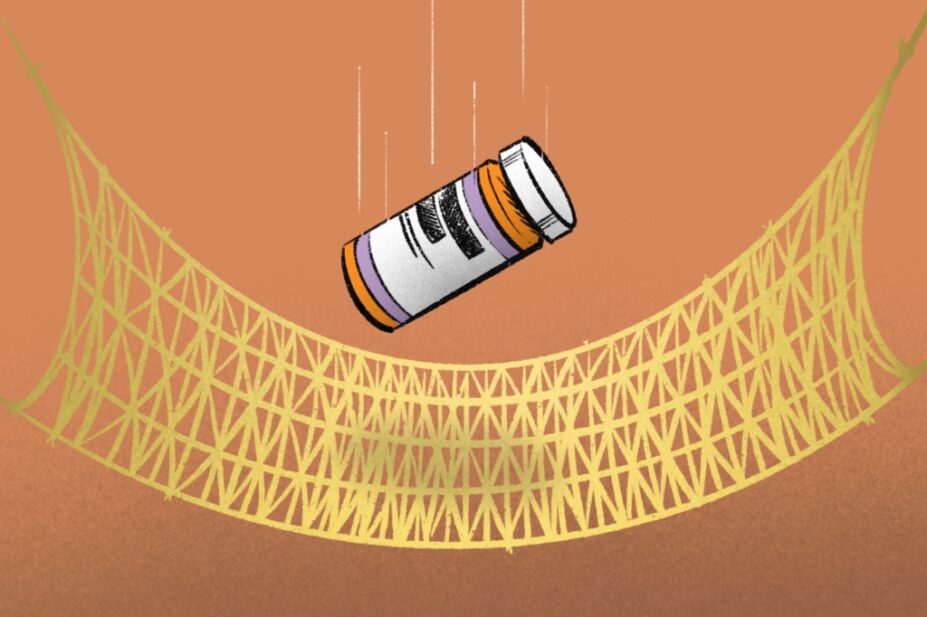
Wes Mountain/The Pharmaceutical Journal
Valproate was first marketed in 1974, and risks of birth defects have been recognised since licensing. There have been regular patient safety alerts published by the Medicines and Healthcare products Regulatory Agency (MHRA) over the years, culminating in an alert published in November 2023, which advised organisations to prepare for new regulatory measures for overseeing prescribing of valproate to new patients and existing female patients.
While we have seen a decline in the number of females prescribed valproate — from 27,441 females in April 2018 to 18,235 females in March 2023 — Baroness Cumberledge’s ‘First Do No Harm’ report, published in 2020, lays bare the impact on children and their families.
In advance of this publication, North Central London (NCL) Integrated Care System (ICS) had already formed a multidisciplinary valproate working group to explore NCL’s adherence to the MHRA recommendations. The working group included a range of clinicians from our medicines optimisation team, primary care, secondary care and the local authority.
An audit in one of our five boroughs highlighted significant gaps in adherence to the MHRA’s recommendations on valproate prescribing
An audit in one of our five boroughs highlighted significant gaps in adherence to the MHRA’s recommendations on valproate prescribing; delays with referrals being picked up by secondary care specialists; a need for clarity on the roles and responsibilities of all clinicians; and a need to improve the quality and consistency in how patient records are coded in primary care.
Following the audit, the working group agreed on three actions to support valproate risk minimisation in NCL. These were to develop an NCL valproate risk minimisation guideline, with a pathway outlining roles and responsibilities for all clinicians; develop a local valproate dashboard to identify gaps in care; and set up EMIS templates and searches to standardise coding and processes in primary care.
The guideline reflected best practice, while being pragmatic to ensure it was practical and feasible to implement. This work required considerable clinician engagement, with input from across primary and secondary care.
The valproate dashboard was developed using the HealtheIntent (HeI) platform, which brings together near real-time data from GP systems and hospital trusts into a single, longitudinal, normalised patient health and care record.
NCL began a four-month pilot to test the practicalities of implementing the guideline in two GP practices and whether the EMIS templates and valproate dashboard functioned as intended. Feedback on the feasibility of using the EMIS templates during a patient consultation was positive, and the templates correctly applied the desired codes to the patients’ records following reviews. The testing of the dashboard highlighted coding issues that required adjustments.
We highlighted two incidents of patients slipping through the ‘safety net’ and becoming pregnant while receiving valproate
During the development of the dashboard, we highlighted two incidents of patients slipping through the ‘safety net’ and becoming pregnant while receiving valproate, requiring a patient safety review by the two practices.
The work holds us in good stead to respond to the MHRA’s recent National Patient Safety alert, which requires integrated care boards to update local guidance for valproate prescribing, review local audits for compliance with the Pregnancy Prevention Programme (PPP) and commission pathways of care for females taking valproate.
The quantitative results of the pilot can be found in the table.
The aim now in our area is to update the NCL guidance put together by the working group and roll out the EMIS searches and templates to all practices. We will then be engaging and running training with primary and secondary care clinicians to ensure they are able to be proactive in using the HeI dashboard to identify and address gaps in their care. This group will also be well-placed to support the ICS in addressing the new regulatory requirements.
Elements of our work in NCL could be replicated in other ICSs looking to improve valproate safety. There are several elements and principles that could be adopted or adapted:
- Engage with cross-sector stakeholders early — this is vital; solutions need to work for everyone, acknowledging and working to overcome local challenges. This may require changes to the commissioning of local services.
- Agree clinician roles and responsibilities within a guideline — once implemented, the guideline will ensure everyone in your system is working to the same principles and standards.
- Guidance should consider scenarios of those with complex care needs but also the capacity of specialists to undertake reviews.
- Standardise and improve the quality of coding in primary care.
While not every ICS may have a population health management platform, such as HeI, which is able to connect primary and secondary care data, digital tools could be developed within the existing digital infrastructure to ensure a consistent way of working across the ICS.
The manner in which healthcare professionals care for patients on valproate will set the precedent for how we tackle the use of all teratogenic medicines in primary care. Most importantly, in our effort to leave no patient behind, it is clear how imperative the use of reliable data and digital innovations are to identify gaps in care and plan for improving care within our population. Our experience of trying to address the long-standing complex issue of valproate safety highlights that there is no easy solution. The opportunity to use data here is possible; however, the challenge is to implement this across the system.


